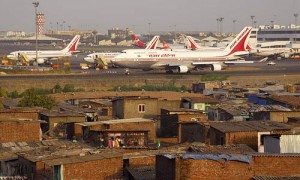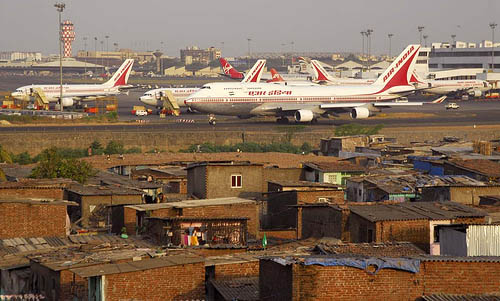By: Anshuman Magazine, CMD, CBRE South Asia
 Track2Realty: Sustainable and inclusive urban development is of particular importance at this juncture of our economic growth. With the urban infrastructure of our major metropolitan cities bursting at the seams from increasing urban migratory patterns—which is only set to accelerate in years to come—the development of new integrated cities has become the need of the hour.
Track2Realty: Sustainable and inclusive urban development is of particular importance at this juncture of our economic growth. With the urban infrastructure of our major metropolitan cities bursting at the seams from increasing urban migratory patterns—which is only set to accelerate in years to come—the development of new integrated cities has become the need of the hour.
Such planned design and development of new urban landscapes should not only address present needs, but should be capable of foreseeing and accommodating future requirements as well. ‘Planning’ being the keyword in this context, there is a rising requirement for the integration of economic, social and environmental approaches towards development.
Development Challenge: Lack of Long-Term Vision
The main challenge facing such development initiatives is the lack of any long-term vision in new town development and urban infrastructure planning in the country. What is missing is a clearly defined “New City Policy” or “Future City Policy” from the government, together with an umbrella organization for the same. Consequently, organizations like the Delhi–Mumbai Industrial Corridor Development Corporation (DMICDC)andtown planning agencies like the City and Industrial Development Corporation of Maharashtra Limited (CIDCO) work independently, without any overall coherence or long-term master plan vision for the country to weave all their large, regional-level development projects together.
Even State-level policies often fall short, and fail to keep up with a larger national vision. An instance of this would be the difficulties and/or difference in planning and implementation approach faced by large regional infrastructure development bodies for nodal projects acrossdifferent states. It has been observed that at present small-scale projects, even private initiatives, work successfully to a certain extent—a case in point being MagarpattaCyber City in Pune. Problems begin, however, when such projects are scaled up to larger city-level or regional level ventures, at which point the projects fall through because of the lack of larger mapping efforts to drive such development planning attempts forward.
Way Forward for New Integrated Cities
The Town Planning Scheme (TPS)—also known as the Land Pooling Scheme (LPS)—has been a workable approach for the planning and development of new towns. Itis also included in the Urban Development Plan Formulation and Implementation (UDPFI) guidelines of the Ministry of Urban Development. State as well as private/semi-private development firms have considered such development policies for preparing comprehensive regional plans—particularly for addressing problems arising out of disconnected development along suburban/peripheral zones of metropolitan centers, industrial corridors and large township development.
Larger Transit-Oriented Development (TOD) concepts have metamorphosed over the years too.A case in point would be CIDCO’s ongoing development of Navi Mumbai, as an example of a functional new city with ongoing transit-oriented infrastructure development. Other recent instances of TOD planning for new cities or SMART City development would be the State Government of Chhattisgarh’s master planning initiative for Naya Raipur.Keeping abreast of rapidly changing technology in this arena could help in creating Integrated Multi-Modal Transport systems, as well as in creating dynamic planning efforts with periodic fast track review and implementation mechanisms.
Smarter transit initiatives for DLF’s Cyber City development in Gurgaon, for instance, began with road widening projects before a Rapid Metro rail was introduced, and still later road under-pass work was added on to benefit commuters from multiple nodes. For a successful New City development, however, the creation of social and physical infrastructure is of equal importance. By way of a recent example, till such infrastructure additions like schools, malls, hospitals and expressways had been put in place, Greater Noida was just an area dominated by real estate development, waiting to become operational and attract a share of the National Capital Region’s population.
But what is to ensure that independent, even private initiatives co-operate with each other in building new integrated cities in India? The problems created by rampant urbanization are among the most important challenges of our times—and they also represent one of the greatest opportunities for the private sector in our country. By taking advantage of this development gap, India’s construction and real estate business is uniquely positioned to shape sustainable and economically competitive cities of the future.





